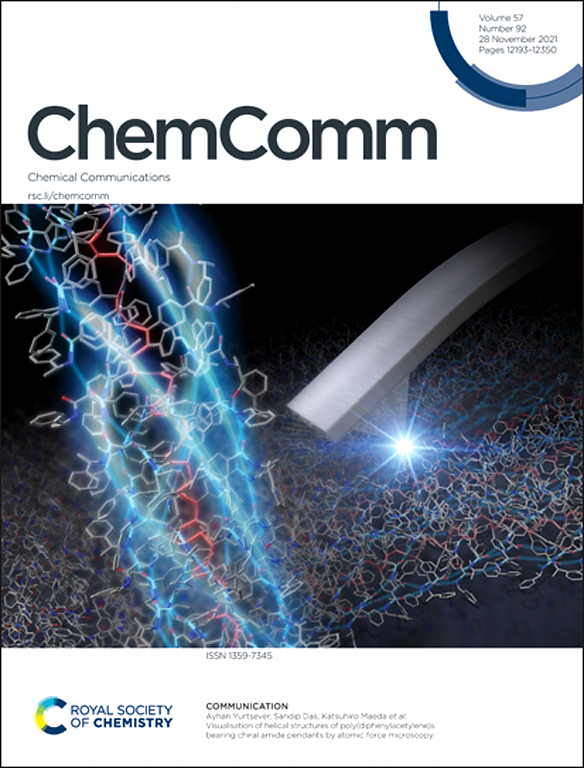Single-atom Fe anchored graphdiyne for high-efficiency nitrate-to-ammonia conversion under ambient conditions†
IF 4.2
2区 化学
Q2 CHEMISTRY, MULTIDISCIPLINARY
引用次数: 0
Abstract
The electrocatalytic conversion of wastewater nitrate (NO3−) to ammonia (NH3) under industrial-grade current densities at ambient conditions presents a sustainable alternative to the energy-intensive Haber–Bosch process, yet remains fundamentally challenging. Here, a highly efficient NO3− to NH3 electrocatalyst with single Fe atoms dispersed on graphdiyne (GDY) is constructed through an in situ growth method. Experimental analysis demonstrates the formation of high-density atomic active sites on GDY, ensuring the high intrinsic activity of the electrocatalyst. Besides, the newly formed sp-C–Fe chemical bonds bridged GDY and Fe atoms providing a well-defined channel for selectively and efficiently transferring electrons from the active sites to the reactants/key intermediates, allowing for selective NO3− activation and efficient protonation. This atomic-scale electronic modulation enables exceptional nitrate reduction performance, achieving record-high faradaic efficiency (45.48%) and ammonia yield (202.34 μmol h−1 cm−2) while maintaining operational stability.
单原子铁锚定石墨炔在环境条件下用于硝酸盐到氨的高效转化
在工业级电流密度的环境条件下,通过电催化将废水中的硝酸盐(NO3-)转化为氨气(NH3),是高能耗的哈伯-博什工艺的一种可持续替代方法,但从根本上讲仍具有挑战性。本文通过一种原位生长方法,构建了一种在石墨二乙烯(GDY)上分散有单个铁原子的高效 NO3- to NH3 电催化剂。实验分析表明,GDY 上形成了高密度的原子活性位点,确保了电催化剂的高内在活性。此外,新形成的 sp-C~Fe 化学键将 GDY 和铁原子桥接在一起,为电子从活性位点选择性地高效转移到反应物/关键中间产物提供了明确的通道,从而实现了选择性 NO3- 活化和高效质子化。这种原子尺度的电子调制实现了卓越的硝酸盐还原性能,达到了创纪录的高法拉第效率(40.17%)和氨产量(106.65 μmol h-¹ cm-²),同时保持了运行稳定性。
本文章由计算机程序翻译,如有差异,请以英文原文为准。
求助全文
约1分钟内获得全文
求助全文
来源期刊

Chemical Communications
化学-化学综合
CiteScore
8.60
自引率
4.10%
发文量
2705
审稿时长
1.4 months
期刊介绍:
ChemComm (Chemical Communications) is renowned as the fastest publisher of articles providing information on new avenues of research, drawn from all the world''s major areas of chemical research.
 求助内容:
求助内容: 应助结果提醒方式:
应助结果提醒方式:


